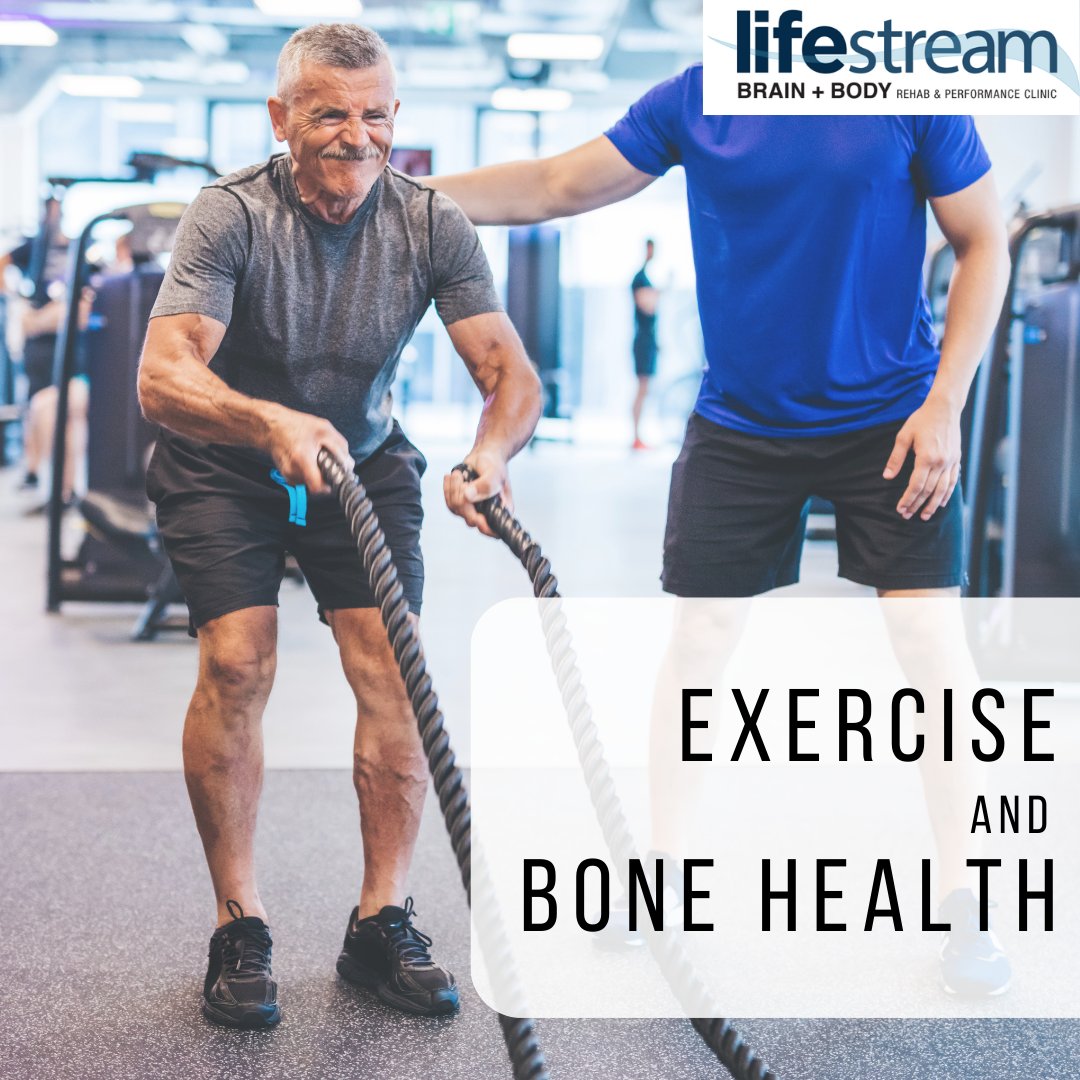Exercise and Bone Health
How can exercise improve my bone health and help be age better?
One of the hallmarks of aging is decreasing bone density. You reach your peak bone density around the age of 30, and it decreases a certain amount every year after that. Our bones are always going through a renewal process involving removing old bone cells and regenerating new ones. Both of these processes are going on at the same time, but as you age, the process of regenerating bone decreases resulting in an overall decrease in bone density instead of maintaining or increasing bone density. The cells that regenerate bone make collagen and other non-collagen proteins. The collagen is what provides bone its strength and resistance to deformation. There are also changes in the structure of the collagen in the bone as we age that lead to increased stiffness and brittleness. Lots of other factors such as genetics, hormones, peak bone mass earlier in life, drugs or medication use, other medical conditions, nutrition, and yes, even physical activity can impact bone mass.
We all know that our bones get more brittle and are more likely to fracture as we get older which is why so many people shy away from physical activity as they get older because they don’t want to hurt themselves.
The question is, how do you prevent further excessive loss in bone mass as you age?
You can’t control all of these factors leading to where you are now, but you can do something moving forward!
Exercise is a great way to help increase bone density as you age. Certain kinds of exercise can help to stimulate the generation of new bone cells. Bone responds to something called “mechanical loading” (which is muscle contraction or bearing weight) by increasing bone formation. The increase in bone formation is proportionate to the amount of mechanical loading or strain put on the bone. Furthermore, including rest periods in-between the periods of time where strain is present (more of a dynamic workout situation) increases the bone formation even more. Exercises that induce strain that is unlike normal strain put on the bone (think multidirectional jumping or versus walking or running) induces the formation of bone. Another reminder, like all processes in the body, certain nutrients are necessary for optimal function. Therefore, adequate protein, calcium, and vitamin D is necessary to experience the full benefits of exercise for bone health. Furthermore, hormonal status and function is important to maintain good bone health.
Here are some tips for maintaining bone health as you age:
– Maintain a healthy body weight: a body weight that is too high or too low can negatively impact bone health. Many don’t think about low body weight but that can negatively impact bone health as much as a higher body weight.
– Eat a healthy diet with adequate protein, calcium, and vitamin D. An adequate vitamin D status is required for optimum absorption of calcium in the gut, so it doesn’t hurt to eat both at the same time.
– Incorporate light weight-bearing aerobic activity: jumping, tennis, volleyball, hiking, etc. Remember to always start light and slowly increase.
– Incorporate light weight-bearing resistance training: Grab some small weights or use your body weight and do various exercises to increase your muscle strength and stability. Remember to always start light and slowly increase.
– Here is a website with some great exercises for increasing strength while maintaining stability:
https://americanbonehealth.org/exercises/
– Mix up your movement: Like we discussed above, dynamic exercise is best for increasing bone density. Create a workout plan with your doctors that changes up the types of exercises you are performing.
Remember to always talk to your doctor if you have or are at risk for a bone-related disease, are at risk for falling or fractures. It is always a good idea to run ideas past your doctor before trying to implement your own workout or diet plan.
Sources:
https://www.mayoclinic.org/healthy-lifestyle/adult-health/in-depth/bone-health/art-20045060
https://www.ncbi.nlm.nih.gov/pmc/articles/PMC3383520/
https://www.ncbi.nlm.nih.gov/pmc/articles/PMC4402109/
https://www.ncbi.nlm.nih.gov/pmc/articles/PMC5467150/#:~:text=At%20the%20apical%20surface%2C%20osteoblasts,proteins%2C%20including%20osteocalcin%20and%20osteopontin.
https://www.ncbi.nlm.nih.gov/pmc/articles/PMC2991386/
https://pubmed.ncbi.nlm.nih.gov/15984409/
https://www.ncbi.nlm.nih.gov/pmc/articles/PMC6179512/
https://www.ncbi.nlm.nih.gov/pmc/articles/PMC6323511/
https://pubmed.ncbi.nlm.nih.gov/16680498/
https://www.osmifw.com/sports-medicine/bone-density-and-weight-bearing-exercise/

